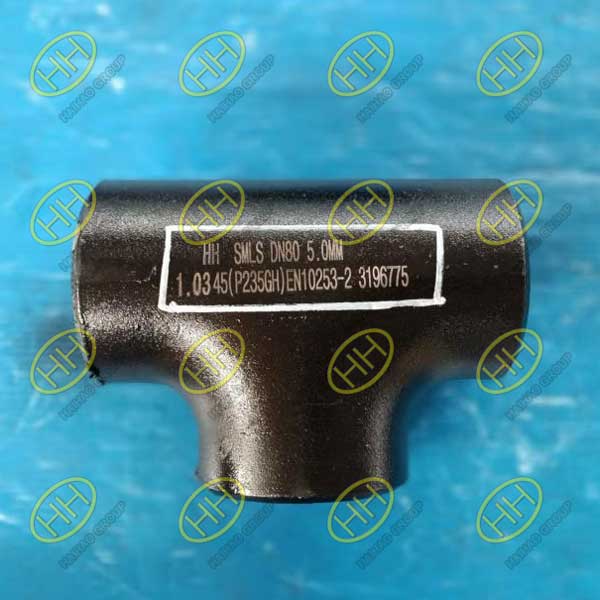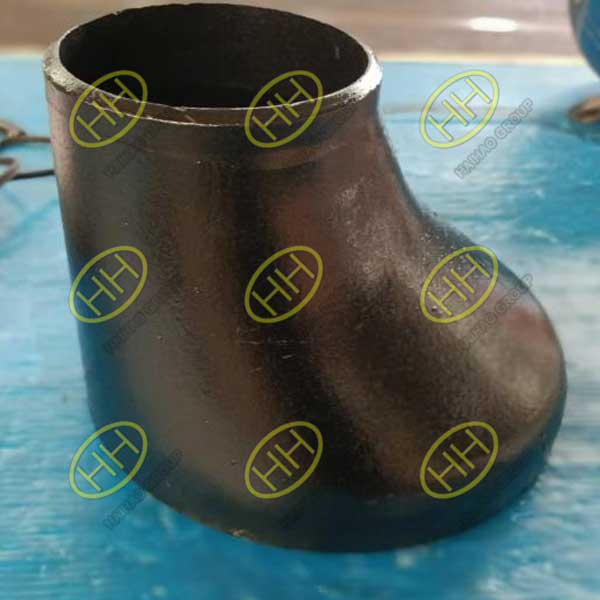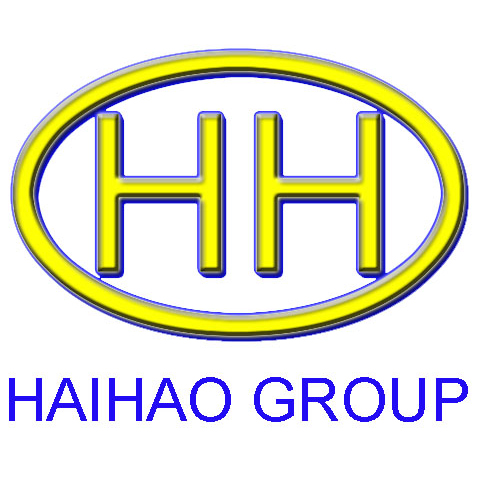What is the differences between P235GH and P265GH?
P235GH and P265GH are both high-quality carbon steel grades widely used in the construction of pressure vessels and pipelines. While they share many similarities, their differences make them suitable for specific applications. This article outlines the key distinctions between these two grades in terms of chemical composition, mechanical properties, and applications.

EN 10253-2 P235GH SMLS Equal Tee
1.Chemical Composition
The primary distinction between P235GH and P265GH lies in their chemical composition:
P235GH: Contains a lower percentage of carbon (up to 0.16%) compared to P265GH. This lower carbon content enhances its weldability.
P265GH: Features a slightly higher carbon content (up to 0.20%) and increased manganese levels. These adjustments improve its strength but may slightly reduce weldability.
2.Mechanical Properties
Another important difference is in their mechanical performance:
P235GH: Has a minimum yield strength of 235 MPa, making it suitable for moderate-pressure applications. Its tensile strength ranges between 360-500 MPa.
P265GH: Offers a higher yield strength of 265 MPa and a tensile strength of 410-570 MPa, providing better performance in higher-pressure environments.

EN 10253-2 P265GH SMLS ECC reducer
3.Applications
P235GH:
Due to its excellent weldability and moderate strength, P235GH is commonly used in:
Heat exchangers
Low-pressure boilers
Pipeline systems for fluids or gases with lower pressure and temperature requirements
P265GH:
With its superior strength, P265GH is ideal for more demanding applications, such as:
High-pressure steam boilers
Pressure vessels
Industrial pipelines carrying high-temperature fluids
Weldability and Fabrication
P235GH: Easier to weld due to its lower carbon content, making it a preferred choice for projects where welding is frequent.
P265GH: Still weldable but may require preheating or other precautions due to its higher carbon equivalent.
4.Cost Consideration
P235GH is typically more cost-effective due to its lower strength and broader availability, whereas P265GH is slightly more expensive due to its enhanced properties.
While both P235GH and P265GH conform to EN standards and are suitable for pressure-related applications, the choice between the two depends on specific project requirements.
Choose P235GH for moderate pressure and temperature applications where ease of welding is a priority.
Opt for P265GH for high-pressure and high-temperature scenarios where enhanced strength is essential.
Haihao Group offers a comprehensive range of piping products and fittings using both P235GH and P265GH materials, ensuring solutions tailored to your project’s needs. Contact us to learn more! Email:sales@haihaogroup.com

